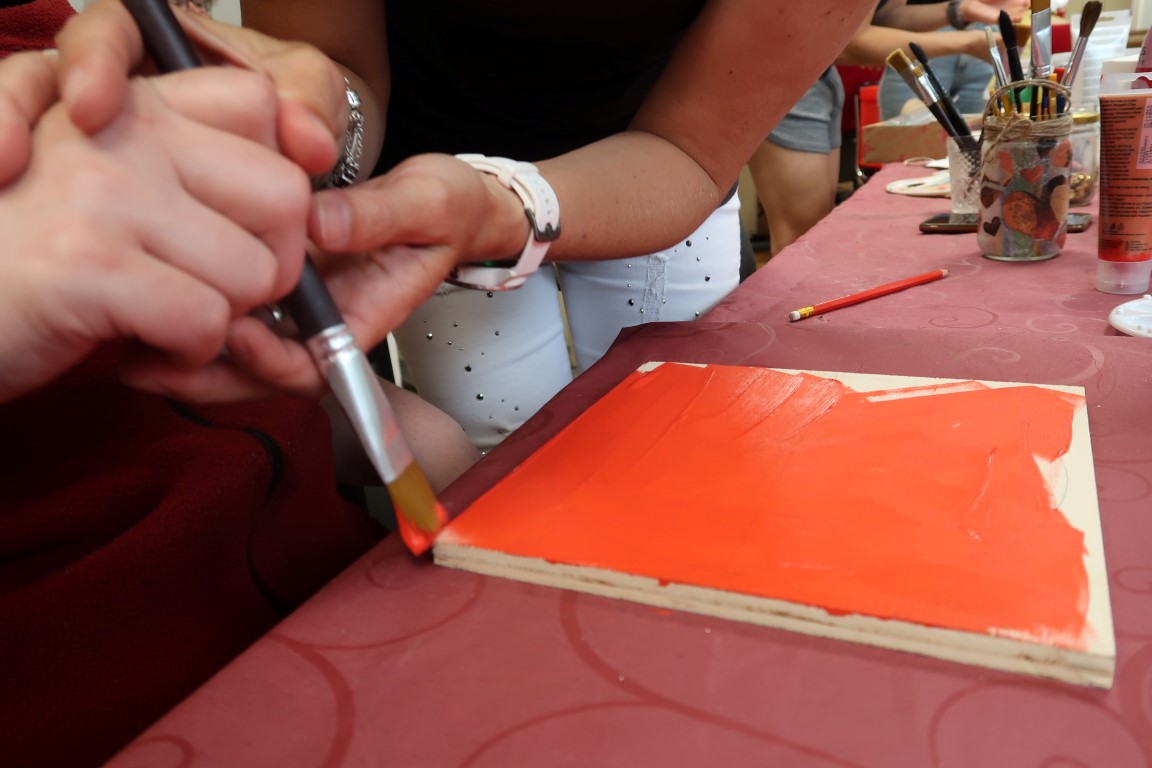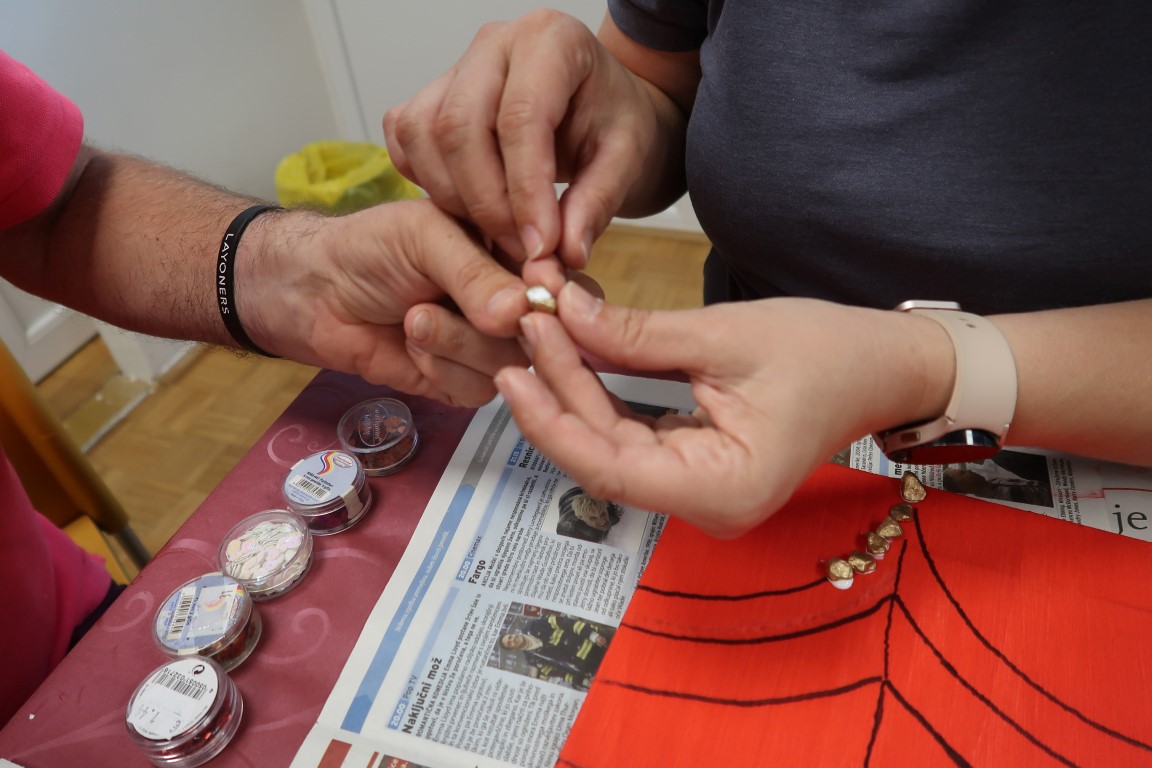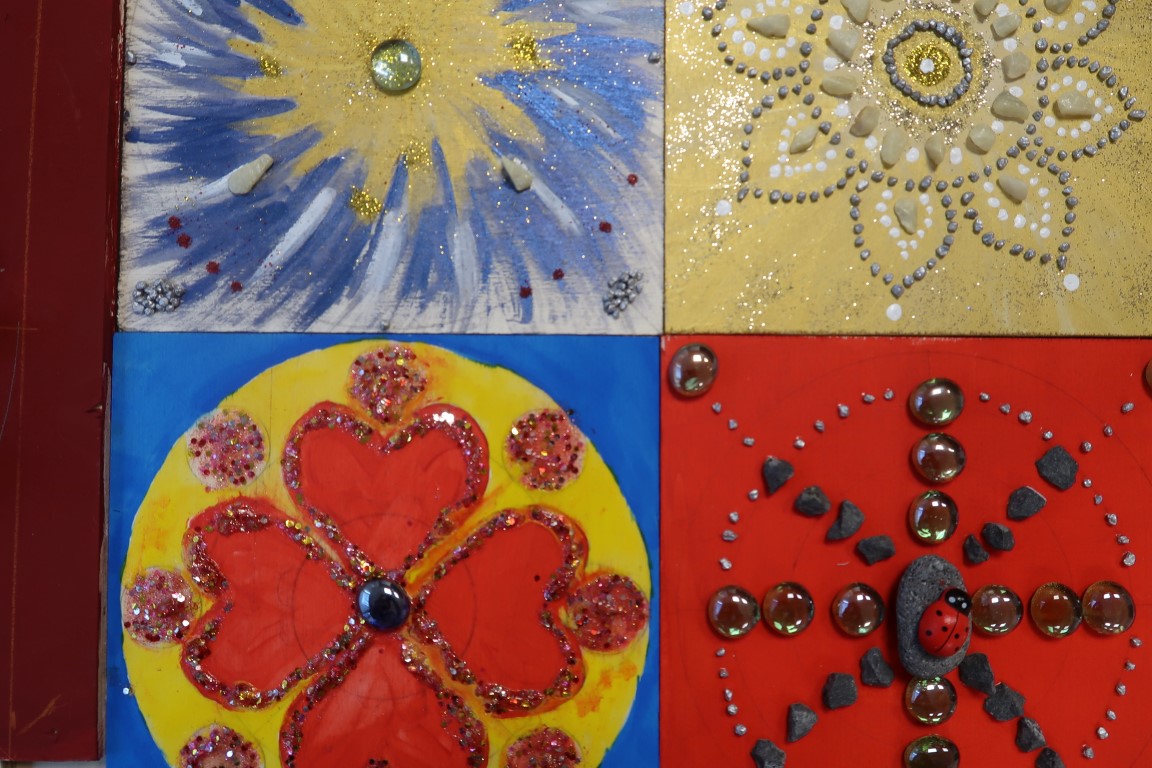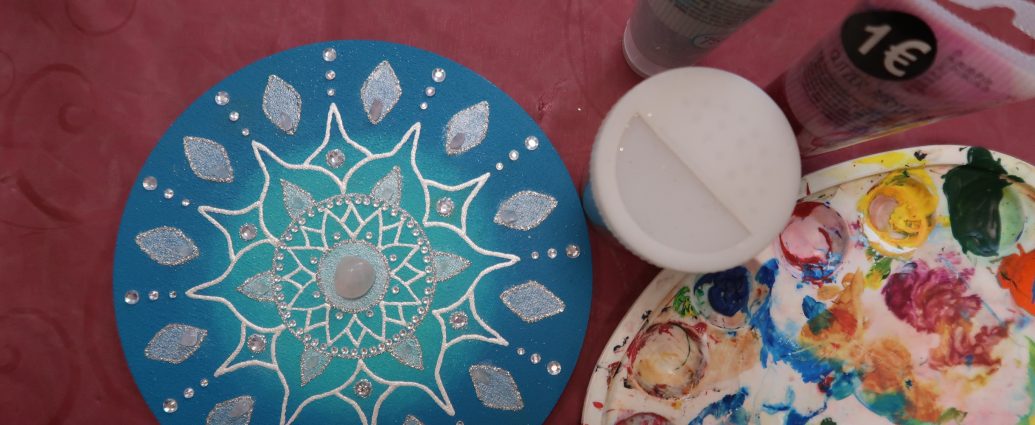Conducted by Nika Jurc, the mandala-making workshop took persons with deafblindness on a journey through the multifaceted realm of this term. In modern, Western usage, the word ”mandala” is used to refer to various diagrams, charts and patterns that symbolically represent cosmic dimensions. Within religious contexts, the mandala occupies a central role in belief systems such as Hinduism, Buddhism, Jainism, and Shintoism, embodying deities and serving as a conduit for meditation and spiritual progression.
People with deafblindness have found a way to relax and express their creativity by creating them. The mandalas they made became a channel for expressing their inner vision and emotions, as they delved into the creation of unique patterns and symbols with a sense of touch and the use of different textures and materials. Therefore making mandalas became for them not only a creative process but also a way to express their inner world and helped to improve their mental and emotional well-being.





